History of Dnipro
Before the founding of Dnipro - the 9th-15th centuries
Presumably in the 9th century AD, on the territory of the Monastery Island (in the center of today’s Dnipro), Byzantine monks founded a monastery (hence the name of the island). According to legend, it was the northernmost point, where one of Christ’s disciples, Andrew the First-Called, reached in his mission of Christian teaching.
The squads of Kyiv princes sailed past the monastery on their way to Crimea and Constantinople and often stayed here for the night. The monastery was most likely destroyed during the Mongol invasion in 1240.
After the Mongol invasion, the region was desolate; the sedentary population moved far to the north-west. In the steppes, which received the name “The Wild Fields”, the Nogai hordes roamed, subject to the Crimean Khan.
In the first half of the 15th century, nomads were driven out of the right bank of the Dnieper River by the Lithuanians. The border between the Grand Duchy of Lithuania and the Crimean Khanate, which emerged in 1441, passed along the Dnieper from its mouth and further eastward - along the Samara River - that is, along the territory of present day Dnipro.
More Historical Facts…
Before the founding of Dnipro - the 16th-18th centuries
In the 16th century, a gradual settlement and revival of the region began, especially after the formation of the Zaporozhye Cossacks.
In 1635, the Polish authorities built the fortress of Kodak at the first Dnieper rapids to control the movements of the Cossacks. Today, it is the village of Stari Kodaky located on the southern outskirts of Dnipro, where you can see the remains of earthen ramparts.
In 1667, according to the Truce of Andrusovo between the Polish-Lithuanian Commonwealth and the Tsardom of Russia, Left-Bank Ukraine, retaining its autonomy, officially became part of Russia. In 1711, after the failure of the military campaign of Peter I, under the terms of the Prut Treaty with the Ottoman Empire, the lands of Zaporozhye again fell under the control of the Crimean Khanate, and the Russian fortresses in the region were demolished.
After the war against the Ottoman Empire in 1735-1739, Russia regained control over this region. However, the border with the Crimean Khanate passed only 100 km to the south, which prevented the development of the region. In 1764, the autonomy of the Left-Bank Ukraine was abolished.
As a result of another war against the Ottomans, the Russian Empire gained control of the mouth of the Dnieper River and Crimea. After that, the need for the Zaporozhian Host, a military force defending the southern borders of the country, disappeared.
Foundation of Dnipro
For the development of the annexed lands, an administrative center was required. It was decided to establish a new town at the mouth of the Kilchen River, at the confluence with the Samara River. It was founded in 1776 and named Yekaterinoslav, probably in honor of Empress Catherine II. The name literally means “the glory of Catherine”.
However, because of the unfavorable location in the marshy area and, as a result, frequent floods, diseases among the population, Yekaterinoslav existed only for several years. In 1783, a decree was issued on the transfer of the town to a new place - to the high bank of the Dnieper River opposite the mouth of the Samara River (the current location of the city of Dnipro).
New Yekaterinoslav was officially founded during the visit of Catherine II, who laid the first stone in the construction of the Transfiguration Cathedral on May 9, 1787. This date is considered the date of foundation of Dnipro. By the end of the 18th century, there were 11 stone and 185 wooden houses in the town, and the population was about 6 thousand people.
Dnipro in the 19th - early 20th centuries
In the 19th century, the town’s population continued to grow. In 1853, it amounted to more than 13 thousand people. In 1862, there were 315 stone and 3,060 wooden houses in Yekaterinoslav. The abolition of serfdom had a huge impact on the development of the town. Starting from the 1860s, the population of Yekaterinoslav began to increase rapidly, mainly due to the peasants.
In 1884, a bridge was built across the Dnieper River and a railway station was opened in Yekaterinoslav. The Catherine’s Railway connected the coal mines of Donbass with the iron ore of Kryvbas, which gave a powerful impetus to the development of Yekaterinoslav and the region as a whole. The Yekaterinoslav locomotive depot became the largest in the south of the Russian Empire. The construction of metallurgical enterprises began in the western part of the town and on the left bank of the Dnieper.
In 1897, more than 121 thousand people lived here. The majority were Russians (42%), Jews (34%), and Ukrainians (19%). Yekaterinoslav became one of the largest industrial centers of the Russian Empire. In the same year, an electric tram was launched in the city - the third in the Russian Empire, after Kyiv and Nizhny Novgorod. A number of public, educational and cultural institutions appeared in Yekaterinoslav.
At the beginning of the 20th century, Yekaterinoslav continued to grow and develop rapidly. By 1910, the population of the city had doubled and amounted to 252.5 thousand people.
During the Russian Civil War, Yekaterinoslav was the scene of battles between different armies and factions. In 1918, after the proclamation of the Ukrainian People’s Republic, it was proposed to rename Yekaterinoslav to Sicheslav, which was supposed to remind of the Cossack history of this region (The Zaporozhian Sich). In total, from 1917 to 1919, the power in the city changed more than a dozen times. On January 1, 1920, Yekaterinoslav became part of the Ukrainian SSR.
Dnipro in Soviet Ukraine
In 1926, Yekaterinoslav was renamed Dnepropetrovsk in honor of Grigory Petrovsky (1878-1958), a prominent Bolshevik and a Ukrainian Soviet politician. During the first Soviet five-year plans, Dnepropetrovsk became the main base of the metallurgical industry in the south of the USSR. From 1926 to 1939, the city’s population nearly doubled to over half a million.
On August 25, 1941, during World War II, Dnepropetrovsk was occupied by German troops. On October 25, 1943, the city was liberated by the Red Army. After the war, the city was restored and again became one of the most important industrial and scientific centers of the USSR. Already in 1945, almost all the factories evacuated to the east resumed production.
The largest Soviet enterprise in the rocket and space industry was opened in this city - the Yuzhny Machine-Building Plant and the Yuzhnoye Design Bureau. In 1966, an automobile bridge across the Dnieper was built in the central part of Dnepropetrovsk, the longest bridge across this river at that time. Mass housing construction began in the 1960s. By the end of the 1970s, the population of Dnipro exceeded 1 million residents. It was decided to build a subway in the city.
Until 1987, Dnepropetrovsk was a city closed to foreigners because of its military-industrial complex enterprises. Due to the crisis that began in the late 1980s, the development of the city slowed down, and the population began to decline.
Dnipro in independent Ukraine
After the collapse of the Soviet Union, the city’s industry began to decline, roads, housing and communal services, and urban transport were in a deplorable state. The construction of the subway almost stopped. In the early 2000s, Dnipropetrovsk began to get out of the crisis: new apartment buildings, shopping and entertainment centers were built.
In 2007-2011, Dnipropetrovsk was one of the four Ukrainian cities that were supposed to host the 2012 European Football Championship. However, due to a number of reasons, the right to host tournament matches was transferred to Kharkiv.
On October 4, 2012, the opening of the “Interpipe-Steel” plant took place - the largest investment project ($700 million) over the years of Ukraine’s independence and the first metallurgical plant built from scratch in Ukraine over the past 40 years.
On May 19, 2016, by a resolution of the Verkhovna Rada of Ukraine, the city was renamed from Dnipropetrovsk to Dnipro. The decision was made as part of the process of decommunization in Ukraine.
Dnipro views
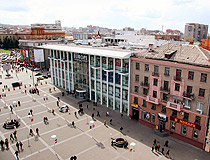
In the center of Dnipro
Author: Eugeny Laptev
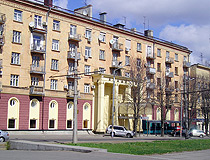
Residential building of the Soviet era in Dnipro
Author: Igor Felendler
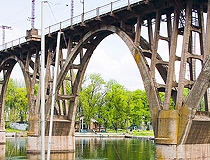
Merefa-Kherson Bridge in Dnipro
Author: Anutka Seradskaya
Dnipro - Features
Dnipro is located in the steppe zone in the eastern part of Ukraine, in the middle reaches of the Dnieper at the confluence of the Samara River. It is the fourth most populous city in Ukraine after Kyiv, Kharkiv and Odesa. In 1776-1796 and 1802-1926, it was called Yekaterinoslav, in 1796-1802 - Novorossiysk, and in 1926-2016 - Dnepropetrovsk.
This city has a humid continental climate. The coldest month is January with an average temperature of minus 3.6 degrees Celsius, the hottest month is July with an average temperature of plus 22.1 degrees Celsius. Due to the geographical position of the city in the valley, as well as significant motorization of the population, Dnipro suffers from atmospheric pollution, manifested in the form of smog. The smog season lasts approximately from May to October.
Dnipro is one of the largest industrial and economic centers of the country, the center of Ukrainian metallurgy. Ferrous metallurgy, metalworking and mechanical engineering, as well as rocket science are especially developed here. This city was one of the key centers of the defense and space industry of the USSR. Dnipro is unofficially the business capital of Ukraine. Many Ukrainian millionaires and billionaires live in this city or were born here.
It is an important railway junction. The Donbass-Western Ukraine, Kyiv-Crimea, Odesa-Mykolaiv-Kherson-Moscow routes pass through this city. Dnipro International Airport offers regular flights to Kyiv. Public transport is represented by trams, trolleybuses, buses, mini-buses, as well as the metro.
The City Day of Dnipro is celebrated on the second Saturday of September. On this day, festive events are held throughout the city: sports competitions, festivals, exhibitions, concerts, fairs, etc. Traditionally, the festivities end on the embankment with fireworks.
Three silver seven-pointed stars depicted in the upper part of the coat of arms of Dnipro symbolize the spray of metal, as metallurgy is the main industry of this city. Stars are also a symbol of space and reflect the rocket industry, which actively developed in Dnipro in the 20th century and made it the space capital of Ukraine. The stars are arranged in the form of the Latin “V”, which means “Victoris” - Victory. The combination of crossed silver saber and arrow has historical roots. This symbolism was common among the Cossacks.
Main Attractions of Dnipro
Embankment of the Dnieper River - one of the most beautiful places in Dnipro and the longest embankment in Europe (about 30 km), a favorite walking place among locals and tourists with dozens of sculptures, monuments, cafes, and restaurants. In the middle of the embankment, there is a large green boulevard.
The most interesting sights are the Dnipro State Circus, the light and music fountain White Swan and the 50-meter-long Family Bench, which symbolizes that Ukraine is one big family. Here you can also take a boat trip along the Dnieper River on a yacht or motor ship. This place looks especially picturesque in the evening.
Monastyrskyi (Monastic) Island - the most romantic and mysterious place in Dnipro, which is located to the east of the center of the city, 50 meters from the right bank of the Dnieper River (the width of the island is about 250 meters, the length - 1.5 km). You can get to the island via a pedestrian bridge from the embankment.
It is part of the Park of Culture and Leisure named after Taras Shevchenko - the central and oldest park of Dnipro. Here you can find a waterfall, St. Nicholas Church, one of the largest monuments to Taras Shevchenko in Ukraine, a Ferris wheel, an aquarium of freshwater fish, a beach, and much more.
On the main territory of Shevchenko Park, which is one of the two main garden and park complexes of Dnipro (along with Lazar Globa Park), you can also see Potemkin’s Palace (1786-1790) - one of the most beautiful and oldest buildings in Dnipro constructed in the classicism style. Today, it is used as the Palace of Students. The park also has an observation deck from which you can enjoy views of the Dnieper River.
Cultural and Business Center “Menorah” - the largest Jewish complex in the world, the main task of which is to revive the Jewish community in Dnipro and in general in Ukraine, as well as to support the idea of tolerance towards various nationalities. This unique building is located in the very center of the city and consists of seven towers, which symbolize the temple menorah. The height of the central tower is 77 meters.
One of the largest museums in the world dedicated to Judaism and the history of the Jewish people - “The Memory of the Jewish People and the Holocaust in Ukraine” - is open here. The complex also has a synagogue, a hotel, a hostel, a concert hall, a conference hall, a tourist information center, souvenir shops, restaurants, cafes, and an observation deck. Sholom-Aleikhema Street, 4/26.
Cathedral of the Transfiguration of the Savior (1830-1835) - one of the symbols of Dnipro, a majestic architectural monument of national importance built in the style of classicism and located in the middle of a green square in the historical part of the city. It is believed that from this building the active urban development of Dnipro began. Soborna Square, 1.
Architecture of Dnipro
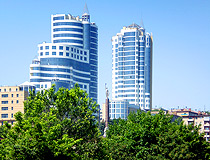
Skyscrapers in Dnipro
Author: Levenko Alexandr
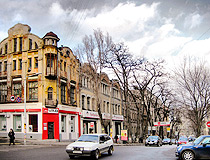
Dnipro architecture
Author: Alex Pylov
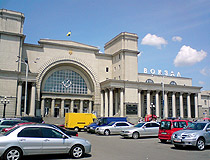
Dnipro Railway Station
Author: Sergey Svetlov
Dmytro Yavornytskyi National Historical Museum - one of the largest and oldest museums in Ukraine. The museum building, located next to the Cathedral of the Transfiguration of the Savior, is an architectural monument of national importance.
Here you can see a variety of historical and cultural monuments of Ukrainian and other cultures, interesting archeological finds, relics of the Zaporizhzhya Cossacks, early printed editions of the 16th-17th centuries, archival and photographic collections, Scythian and Sarmatian antiquities, antique porcelain, clocks, icons, furniture, weapons, etc.
This museum also has the largest collection of ancient stone sculptures in Ukraine (about 80 statues). Another attraction of this museum is “The Battle for the Dnieper”’ - one of the largest dioramas in Europe dedicated to the events of the crossing of the Dnieper River and the liberation of the city during World War II. Dmytra Yavornytskoho Avenue, 16.
Dnipro Art Museum. This museum has a unique collection of works of painting, sculpture, graphics, arts and crafts of the 16th-21st centuries. Here you can see rare examples of Ukrainian icon painting. The pearl of the collection is the paintings of the local artist M. Sapozhnikov, made in the technique of symbolism. Shevchenka Street, 21.
Museum of Ukrainian Painting. The collection is based on the works of famous local artists, who lived and worked in the city in the second half of the 20th century. On the second and third floors there are temporary exhibitions of famous Ukrainian artists, exhibitions of contemporary art. Troitska Square, 5?.
“Cars of the Past”. This private museum of vintage cars presents several dozen cars, trucks, motorcycles, mopeds from different eras and countries. In addition, the museum presents a lot of other exhibits that complement the atmosphere of the mid-late 20th century. There is also a themed cafe here. The easiest way to get to the museum is to walk about 300 m along Selianskyi Descent from Naberezhna Peremohy Street. Mandrykivska Street, 44.
Aerospace Museum named after A.M. Makarov - the only museum in Ukraine where rocket and space technology is exhibited: satellites, missiles and other interesting objects. Haharina Avenue, 26.
Dnipro House of Organ and Chamber Music. St. Nicholas (Bryansk) Cathedral was built at the expense of the Bryansk Metallurgical Plant (Dnipro Metallurgical Plant) in 1913-1915. In 1929, with the dissolution of the religious community, the building was given to the plant. After that, it was used as the Palace of Pioneers, a sports school, and a coal warehouse.
In 1988, the Dnepropetrovsk House of Organ and Chamber Music was opened in this picturesque building. Today, international organ festivals are held here, as well as concerts of organ and chamber music. Serhiia Nihoiana Avenue, 66.



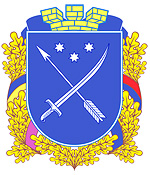






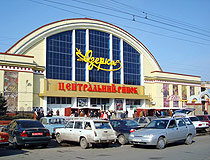
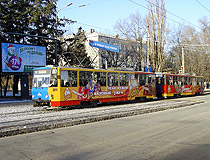
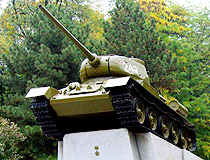
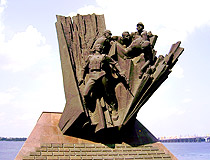
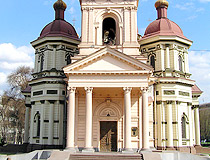
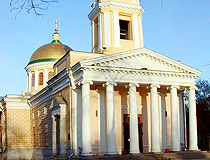
The comments of our visitors